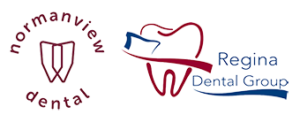How Does Dental Scaling and Root Planing Help Prevent Gum Disease
According to the Canadian Dental Association, 70 per cent of the Canadian population will develop gum disease at some point in their life. Gum disease occurs when your gum line becomes inflamed with bacteria (caused by plaque and tartar build up) that can spread to the bones that surround and support your teeth. There are three stages of gum disease: gingivitis (mild gum inflammation), periodontitis and advanced periodontitis. While curable and preventable, gum disease can often go undetected and once symptoms are spotted it’s often to the point where it’s so advanced you may need dental scaling and/or root planing. If untreated, gingivitis can lead to periodontitis causing tooth decay and loss.
What is dental scaling and root planing?
Scaling and root planing is a non-surgical procedure done to treat periodontal disease. Often referred to as a deep cleaning, the procedure involves thoroughly removing bacterial toxins and tartar deposits from your teeth, root and crown surfaces. If you have gum pockets that are four to six millimetres in depth, you may require root planing, which removes hard tartar and surface dentin and smooths all rough areas on your root surfaces. Smooth root surfaces keep bacteria, plaque and tartar from re-adhering underneath the gum line, allowing your gums to heal and reattach themselves more firmly.
When would someone need dental scaling and root planing?
Mild forms of gum disease don’t show any symptoms which is why having regular dental visits are key. If you have a stubborn plaque that can’t be removed by brushing or flossing, your dentist may recommend scaling – which acts as a preventative measure to help reduce the risk of gum disease. It’s also different from a standard dental cleaning as it involves cleaning areas of the tooth below the gum line. When you have more advanced signs of gum disease this is when you would require root planing.
Is scaling a painful procedure?
Not really, as the hygienist or dentist numbs your gums and teeth with a local anaesthetic. After the procedure, your gums may be a little tender and numb; however, by maintaining a proper oral home care routine your gums should be pink and healthy within a few hours.
How to maintain your teeth after treatment:
According to Oral-B, the easiest way to maintain healthy teeth and gums after periodontitis/gum disease is having a robust oral care routine to help keep your mouth healthy. Regular hygiene visits to your dentist are also strongly recommended.
If you’re looking to maintain healthy teeth or gums after treatment or reduce the risks of developing a gum disease, try these simple but effective methods.
- Brush at least twice daily
- Replace your toothbrush when bristles are worn
- Floss daily in between your teeth to remove hidden plaque
- Use an antimicrobial mouthwash
To ensure optimal dental health, it’s best that you maintain proper oral health regimes as gum disease can open the door to several other oral and physical conditions.
If you would like to learn more, please do not hesitate to give us a call or contact us to book an appointment.
